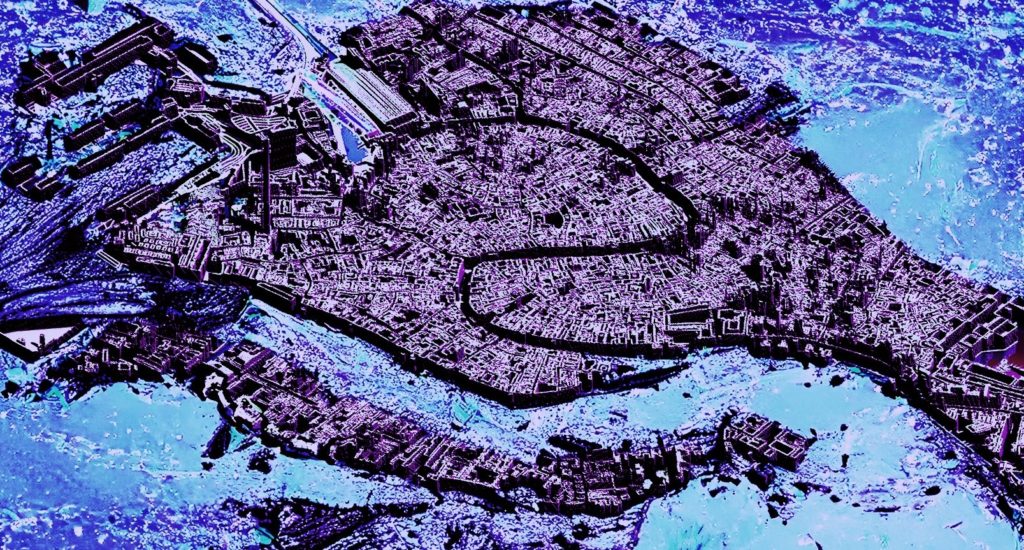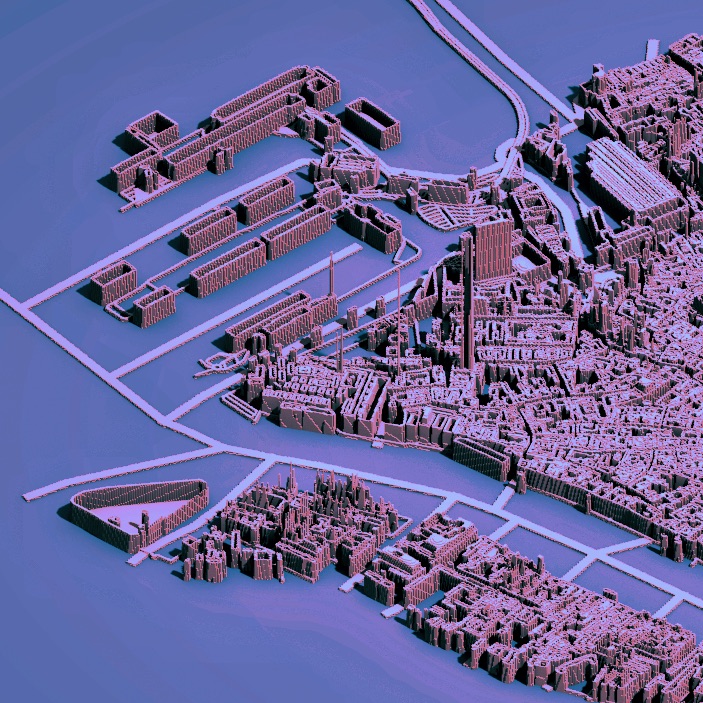
Figure 1: A high-resolution image of the dgital twin of Venice, by Logos RI
Refined Global Advancements in Urban Digital Twin Applications
Cities worldwide are leveraging Urban Digital Twin (UDT) to revolutionize urban planning and management. These technologies provide unprecedented real-time insights into urban dynamics, significantly enhancing urban efficiency and addressing complex logistical challenges.
From Barcelona’s utilization of the supercomputer MareNostrum for urban data processing to Singapore‘s ambitious initiative to create a digital twin of the entire nation, digital twins are at the forefront of urban innovation. European collaborations, such as between Barcelona and Bologna, aim to foster a network of digital twins to lead digital urban governance. These cities are standardizing data to enhance public policy decisions on urban mobility, energy, and sustainability.
Further afield, Cambridge University, is hosting of the Digital Twin Hub to integrate digital twins across various sectors. Meanwhile, cities like New York City and Melbourne employ digital twins for infrastructure and traffic management. Additionally, Google’s Sidewalk Labs enhances urban environmental planning through innovative platforms like the Tree Canopy Lab.
EXTRACT’s Urban Digital Twin: Enhancing Urban Safety and Efficiency in Venice
In this innovative landscape, the EXTRACT project, introduces a pioneering application of UDT in Venice, Italy—a city known for its unique architectural complexity and significant tourist influx. The UDT developed by LOGOS exemplifies advanced digital twin technology applied in urban settings.
At the heart of this UDT is a specialized Python script that transforms geographic and structural data from OpenStreetMap (OSM) into a semantically enriched format. This format is ideal for real-time integration into Venice’s dynamic digital model. The script processes data to extract essential urban infrastructure elements like roads and buildings, converting them into a Resource Description Framework (RDF) that facilitates semantic processing.

Figure 2: Digital twin of Venice created by Logo RI
Semanticization: Refining Data for Enhanced Decision-Making
Semanticization is central to the UDT’s functionality. This process organizes city data into a comprehensive ontology that enhances visualization and decision-making capabilities.
This semantic enhancement of urban data is not merely about data translation; it’s about making the data comprehensible and actionable for both machines and human decision-makers.
By structuring data with precise, consistent semantic tags, the UDT achieves a robust synthesis of disparate data streams—from IoT sensors to public utilities and emergency services—into a unified, interactive city model. This structured data enhances the city’s operational visibility and aids in proactive urban management by enabling precise simulations of emergency scenarios and the formulation of optimized evacuation strategies.
Operational Benefits in Emergency Management
The practical benefits of this approach extend beyond emergency management, offering strategic advantages in urban planning. By providing semantically enriched data, the UDT allows city planners to anticipate and strategically respond to urban development needs and policy impacts, thereby fortifying the city’s resilience and responsiveness.

Figure 3: Dashboard view of the digital twin, looking at the heat map and peope position
Looking Ahead: The Future of Urban Digital Twins
As LOGOS continues to enhance the capabilities of the UDT, with Mathema‘s concurrent enhancement of the simulation environment, the EXTRACT project is setting benchmarks for leveraging digital twins to revolutionize urban management and safety. This innovative approach underscores the potential of digital twins not just to mirror reality but to predict and improve it, equipping cities worldwide with the tools for smarter governance and operational efficiency.
Explore More About the Impact of Digital Twins
To learn more about how digital twins are shaping the future of urban environments and their broader applications across different sectors, visit:
- Digital twins will change operations with use cases across industries
- The benefits of digital twin networks
Projects
- Project Iceberg – British Geological Survey
- Centre for Digital Built Britain – University of Cambridge
- Digital Twin Hub – UK
- Digital Twin City Centre – Gothenburg in Sweden
- Digital Twin New York City – Columbia University
- New South Wales, Australia
Resources
- Google’s Sidewalk Labs
Google’s Environmental Insights Explorer (EIE)